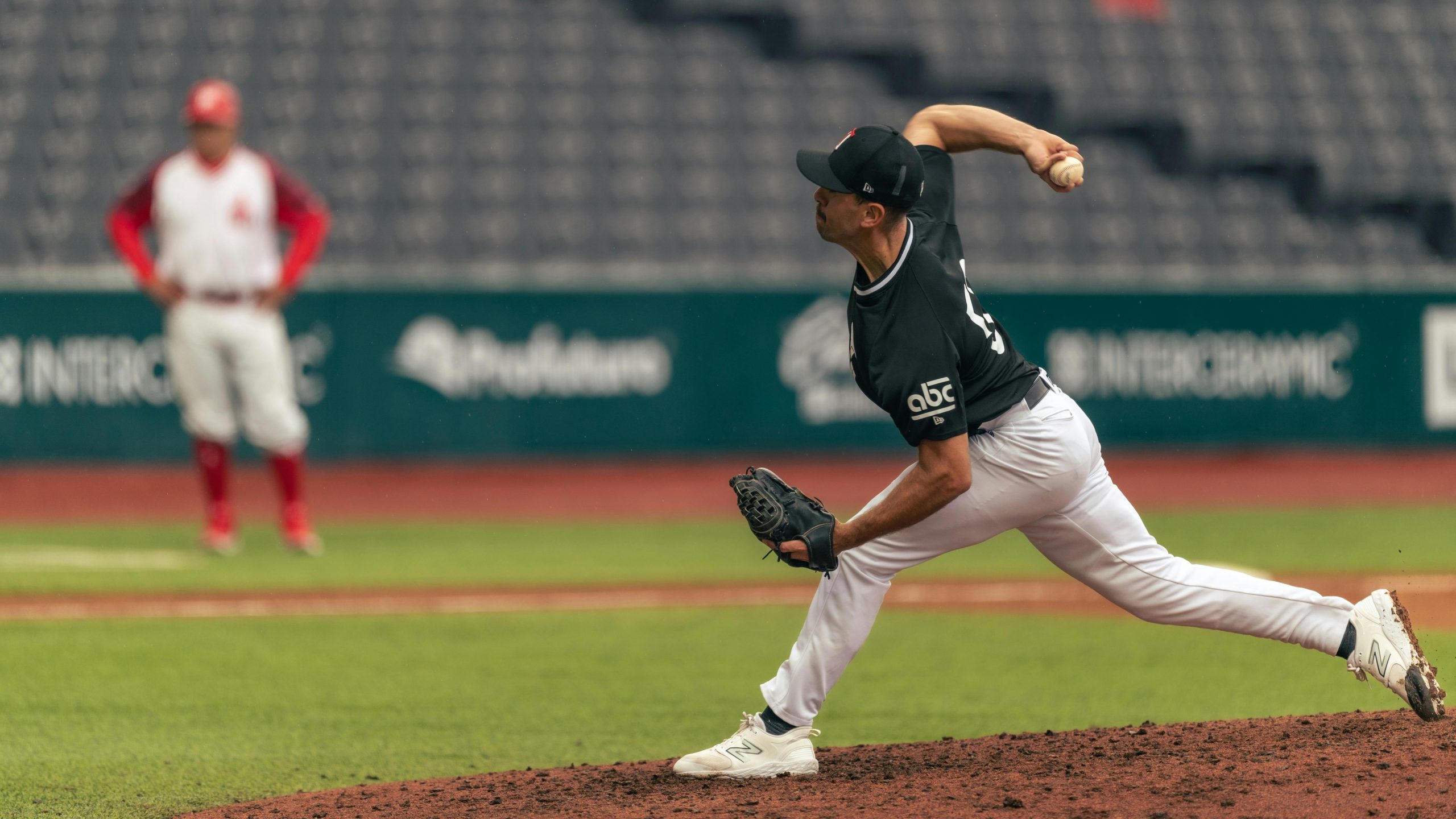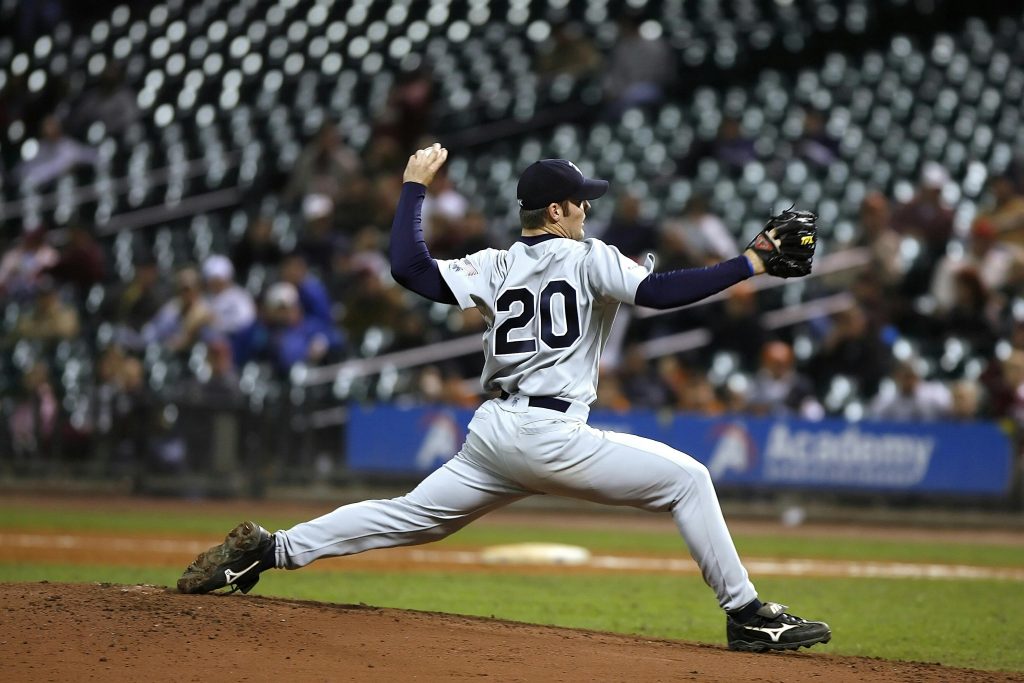Baseball is often described as a game of inches, but it’s also a game of milliseconds. A batter has roughly 0.4 seconds to see a pitch, recognize it, decide whether to swing, and execute that swing. One of the biggest factors that can throw off that decision? Baseball pitch grips.
Yes, that subtle shift in finger placement can change everything—from the ball’s velocity and spin to how late it breaks. In this article, we’ll break down how different pitch grips affect a hitter’s reaction time, what that means for strategy, and how pitchers use these variations to stay ahead.
What Are Baseball Pitch Grips, and Why Do They Matter?
A baseball pitch grip refers to how a pitcher holds the ball in their hand before the release. Each grip alters the ball’s:
- Speed
- Spin rate
- Axis of rotation
- Movement (horizontal and vertical)
- Perceived release point
These differences translate directly to what the batter sees—and how hard it is to hit.
For example:
- A four-seam fastball grip gives backspin and stays relatively straight.
- A two-seam fastball grip causes the ball to tail in on same-handed hitters.
- A curveball grip produces topspin that drops the pitch vertically.
Each pitch grip creates a visual and timing challenge for the batter, which brings us to their reaction.
How Do Baseball Pitch Grips Impact Batter Reactions?

Batters don’t just swing at the ball—they interpret a range of cues in milliseconds to decide how and when to swing. These cues include the pitcher’s motion, release point, ball spin, and velocity. When a pitcher changes their grip, they alter many of these cues simultaneously, which disrupts the batter’s ability to react effectively.
Even small grip changes can affect:
- Perceived pitch speed
- Spin characteristics
- Movement patterns
- The “shape” of the pitch in the air
Let’s dive deeper into the main ways that baseball pitch grips interfere with a hitter’s ability to track and hit the ball.
1. Visual Deception
A batter’s brain works like a prediction engine. Based on the pitcher’s windup and initial release, they anticipate where the ball is going to be. The type of spin—and how early it’s visible—helps a hitter recognize the pitch.
However, different pitch grips can disguise or alter that spin, leading to poor predictions.
Here’s how specific spins differ:
- Fastballs have high backspin, which makes them appear to “rise” or stay flat longer. It’s often the most visible spin.
- Curveballs generate topspin, which causes them to dive. The spin is slower and easier to pick up, but it fools batters by dropping below the expected path.
- Sliders are deceptive because they have tight, tilted spin that mimics a fastball’s early movement. They break sharply at the last second, often out of the hitting zone.
- Knuckleballs flutter without consistent spin, making their path unpredictable. This rare pitch type is nearly impossible to track visually.
Example:
A well-thrown slider can have the same release point and speed as a fastball for the first 20–25 feet of travel. To the batter, it looks like a fastball. But it takes a sharp turn late, causing the batter to swing over it or miss the sweet spot entirely.
2. Delayed Recognition
Timing is everything in hitting. A fraction-of-a-second delay in pitch recognition can mean the difference between solid contact and a whiff. Certain grips—especially for off-speed pitches—are designed to slow the ball or add late movement, both of which delay the batter’s recognition.
Here’s how some grips cause hesitation:
- Changeup Grip: This grip mimics the fastball in every way except speed. The arm motion and initial trajectory are the same, but the pitch is 8–10 mph slower. The batter starts their swing early, expecting a fastball, and ends up ahead of the pitch.
- Splitter Grip: Looks like a fastball out of the hand, but the grip causes the ball to drop sharply in the last third of its flight. The drop causes late misreads and off-balance swings.
- Curveball Grip: The batter sees a looping arc, but by the time they realize the depth of the drop, their timing is already off.
These grips create what pitchers call “pulling the string“—the batter feels like the pitch was yanked away just as they committed to their swing.
Result: Even when batters identify the pitch type mid-flight, it’s too late to make meaningful adjustments, leading to weak contact, foul balls, or strikeouts.
3. Tunnel Vision & Pitch Tunneling
Modern pitching strategy emphasizes pitch tunneling, a concept where multiple pitches look nearly identical at the release point and early in flight but “break” in different directions at the last moment.
To do this successfully, pitchers must:
- Use grips that allow for similar arm motion
- Release the ball from the same height and angle
- Rely on grip-induced spin to create late break
Example:
A pitcher throws a four-seam fastball and a slider with the same arm slot and release speed. For the first 20 feet, the batter sees a straight trajectory. Then the fastball stays true while the slider suddenly breaks across the plate.
The result? The batter commits to a swing path based on the fastball, but the slider veers away. Unless the batter has exceptional pitch recognition skills, the odds of solid contact are slim.
Pitchers who tunnel well rely heavily on their grip technique to control subtle spin differences. It’s not just about having nasty stuff—it’s about making everything look the same until it isn’t.
Key Pitch Grips and Their Strategic Impact

Let’s now take a more detailed look at key baseball pitch grips, what they do to the ball, and how batters tend to react to each.
Four-Seam Fastball Grip
- Speed: 90–100+ mph
- Grip: Across the seams to maximize tight backspin
- Movement: Minimal; rides true
- Strategic Purpose: Establish dominance in the zone, climb the ladder, set up off-speed pitches
- Batter Reaction: Must decide quickly; often results in swing-and-miss high in the zone due to “rising” effect
Two-Seam Fastball Grip
- Grip: Fingers along the seams for lateral movement
- Movement: Armside run (in toward same-handed hitters), slight sink
- Strategic Purpose: Jam hitters, induce weak contact or ground balls
- Batter Reaction: Contact is often off the handle; batters may misjudge movement and swing late
Curveball Grip
- Spin: Topspin generated from snapping wrist
- Break: Downward and early
- Strategic Purpose: Disrupt timing, change eye level, finish at-bats
- Batter Reaction: If not identified early, results in overcommitted swings or frozen takes
Slider Grip
- Spin: Tight, diagonal spin
- Break: Late and sharp, usually horizontal
- Strategic Purpose: Deceive with late movement; exploit swing paths geared for fastballs
- Batter Reaction: Swings over the pitch or chases outside the zone
Changeup Grip
- Velocity: 8–10 mph slower than fastball
- Spin: Similar axis to fastball, but less revolutions
- Strategic Purpose: Disguise speed difference and disrupt timing
- Batter Reaction: Early swing; often results in pop-ups, dribblers, or strikeouts
Splitter Grip
- Grip: Fingers split wide over the seams, pushed deeper into the ball
- Break: Sudden vertical drop
- Strategic Purpose: Late drop to force misses or weak contact
- Batter Reaction: Ball “falls off a cliff,” leading to empty swings or topped balls
How Pitchers Use Grip Variety to Outsmart Hitters
Pitch Sequencing
Smart pitchers combine different pitch grips to sequence pitches that challenge batters’ timing and eye level.
- Example 1: Fastball → Changeup → Fastball
Keeps the hitter guessing between high velocity and off-speed. The fastball after the changeup feels even faster.
- Example 2: Fastball → Curveball → Slider
Uses vertical then horizontal movement, pulling the hitter in multiple directions.
This mixing of grips and movement types prevents hitters from getting comfortable.
Reading the Batter
Pitchers use batter tendencies to decide which grip-based pitch to throw.
- If a hitter pulls off-speed pitches, pitchers may grip for more lateral break.
- If a hitter struggles with velocity up in the zone, fastball grips become the weapon of choice.
Smart grip choices amplify natural weaknesses.
Third Time Through the Lineup
As hitters gain familiarity with a pitcher’s repertoire, grip changes become more important.
To stay effective, pitchers might:
- Mix in a less-used grip (e.g., cutter or sinker)
- Change the speed or break of an existing pitch by altering the grip
- Move the ball to different locations with the same pitch
Grip variation keeps hitters off balance, even if they’ve already seen the pitch type before.
Relievers and Grip Specialization
Relievers often dominate because they only need 1–2 elite pitches—and they perfect their grips on those pitches.
A reliever with:
- A high-90s fastball (four-seam grip)
- A nasty slider (tight spin grip)
…can be nearly unhittable in short outings. The contrast in spin and speed, combined with precise grip control, makes their arsenal deceptively simple but effective.
Batter Adjustments: Can Hitters Learn to Spot Grips?
At the pro level, yes—but it’s still tough.
Elite hitters use:
- Video analysis to study spin and release points
- Pitch usage patterns to predict sequencing
- On-field observations to read subtle cues in grip or hand position
Even then, pitchers with good mechanics and consistent tunnels can make grip-based differences nearly impossible to detect.
That’s why the battle between pitcher and hitter is so compelling—every at-bat is a mind game shaped by grip, spin, and timing.
Youth and Amateur Players: Should You Experiment with Pitch Grips?
Absolutely—but with caution. At younger levels, it’s important to:
- Focus on fastball command first
- Introduce new grips gradually (changeup, then curveball, then slider)
- Avoid overusing breaking pitches too early (risk of arm injuries)
Grip experimentation builds control, confidence, and deception, but it should always be paired with good mechanics and arm care.
Want to Go Deeper?
Here’s what you can do next:
- Watch slow-motion videos of MLB pitch grips and analyze spin
- Practice different grips during flat-ground throwing sessions
- Log your pitch outcomes by grip to identify which are most effective
Whether you’re a pitcher looking for an edge or a hitter trying to decode what’s coming, mastering the details of baseball pitch grips will elevate your game.
Wrapping Up
To the casual eye, baseball pitch grips might seem like minor details. But for pitchers and batters alike, they’re a central part of the chess match on the diamond.
From a high school mound to an MLB stadium, understanding how baseball pitch grips affect batter reactions and strategy is key to mastering the mental and mechanical game.

